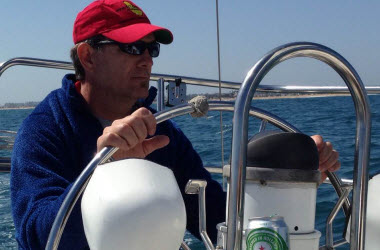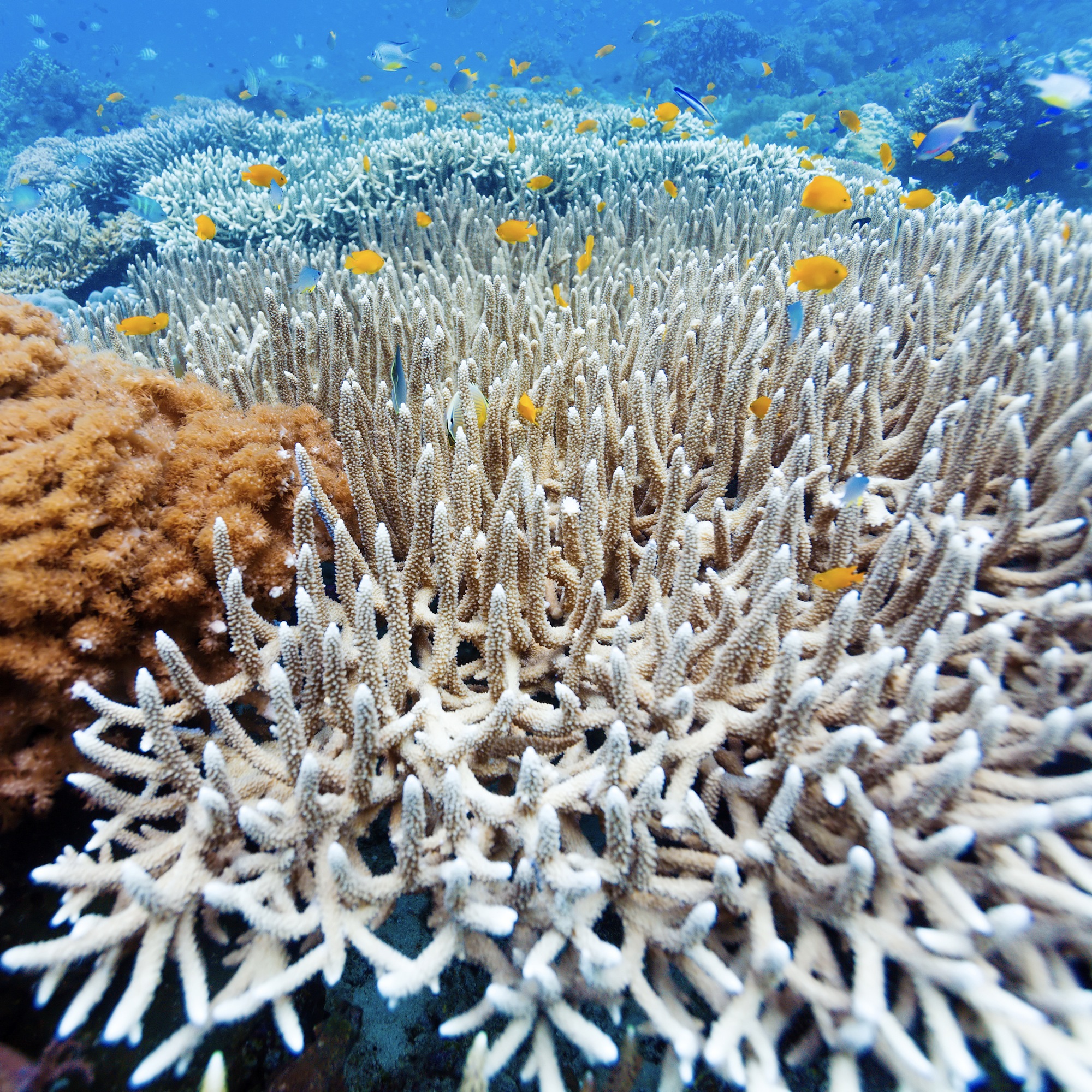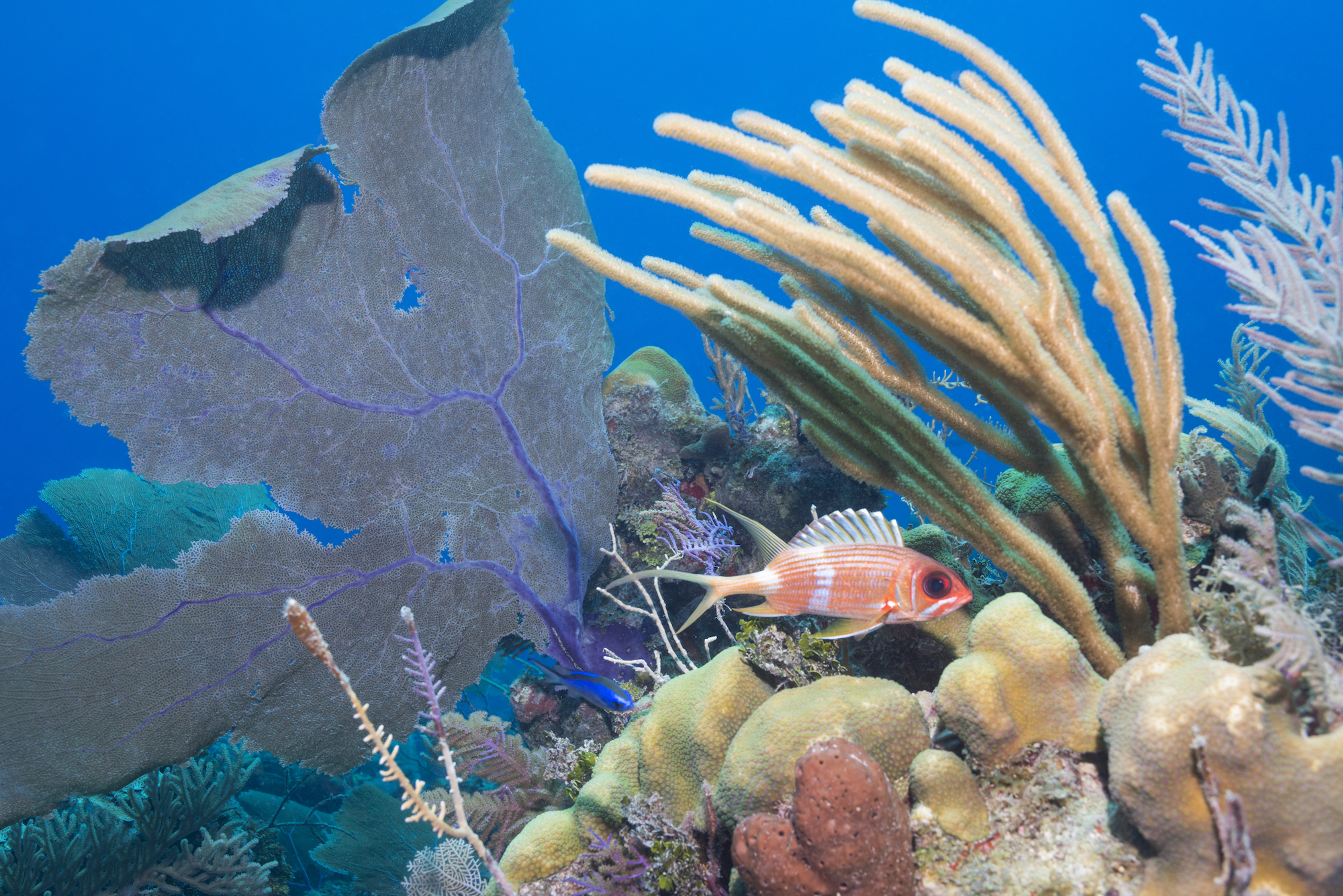March 28, 2017
It’s day four of my six-day diving trip and we still haven’t seen a single shark. My new Italian acquaintance, Davide, has been on the boat eight days now and is starting to believe that sharks in the Galapagos don’t exist. For him, this trip is a bucket list opportunity to see the schooling hammerheads. Davide and I start to worry that we traveled to the land of Darwin to see nothing but blue water.
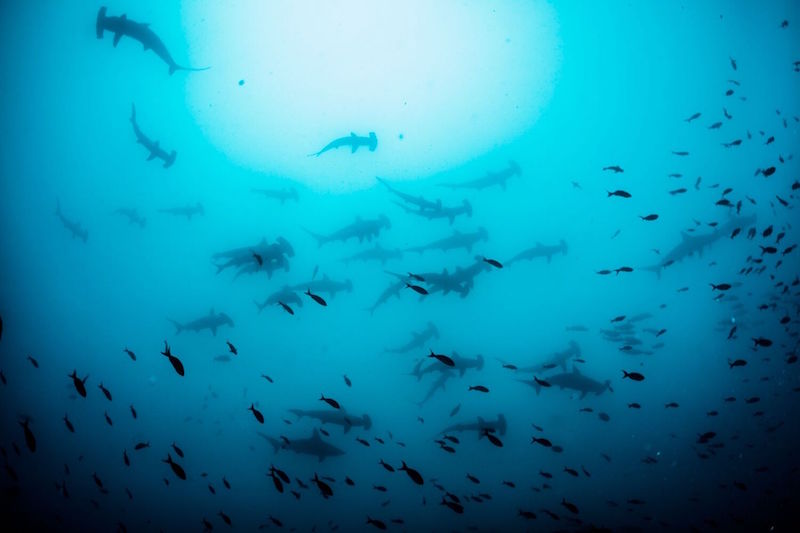
We pull up to Gordon Rocks, which is infamous for large schools of hammerhead sharks. Davide has been to the site multiple times already with no results, neither of us is optimistic. We roll off the boat and descend into the cloudy, fast-moving Galapagos currents. We stop our descent at 100 feet, latch onto the rocks, and wait. I’m composing my shot just in case something appears. I hear a loud garbled shriek come out of a regulator and turn to see two large hammerheads coming our way. Simultaneously, the light from the surface starts to fade. I look up to what I define as one of the most surreal moments of my life, more than 50 hammerheads densely schooled together moving above us. I pointed my fisheye lens up and captured my bucket list image.
I spent two weeks in the Galapagos Islands as well as a week and a half touring Ecuador via motorcycle.  During that time, I came across some of the most spectacular variations in diversity and morphology. I came across more endemic species than I thought imaginable, from penguins, hummingbirds, sea iguanas, to the rare and highly illusive Galapagos Rail. Of all the animals I photographed, the hammerheads were the only ones I truly wanted to shoot.
During that time, I came across some of the most spectacular variations in diversity and morphology. I came across more endemic species than I thought imaginable, from penguins, hummingbirds, sea iguanas, to the rare and highly illusive Galapagos Rail. Of all the animals I photographed, the hammerheads were the only ones I truly wanted to shoot.
When I started to fear that we wouldn’t see them, I began to imagine all the possible reasons why they weren’t showing up. One, it was the off-season for the larger marine life in the Galapagos. Two, I started hypothesizing that the full moon might have created some upwelling and lured them, along with the other megafauna, elsewhere. To make sense of everything, I attempted to use the website migramar.org, a marine conservation site where you can track the migration of sharks. 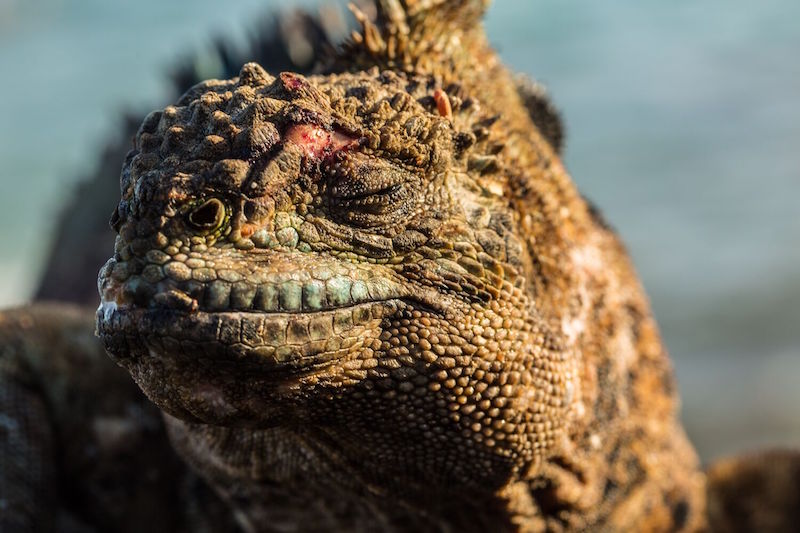 The wifi in the Galapagos was pretty spotty, so it was not something I could utilize with regularity, but I did manage to track down one hammerhead that had made it to Cocos Island - a mere 523 miles northeast.
The wifi in the Galapagos was pretty spotty, so it was not something I could utilize with regularity, but I did manage to track down one hammerhead that had made it to Cocos Island - a mere 523 miles northeast.
At that point, I had chalked the diving portion of my trip up as a loss; no schooling hammerhead sharks on this trip. I was warned that I had to dive the Galapagos during the right time of the year and that it helped to be on a liveaboard, able to move around with ease, but I was there and I had to try. That morning we got on the boat, my Italian friend and I joked that the Galapagos’ government pays people to say that there are plenty of sharks in the Galapagos.
Thankfully, that day turned into a truly astounding experience.

